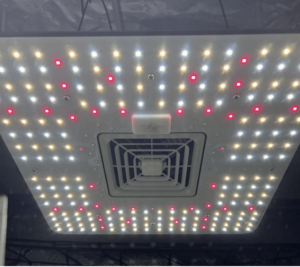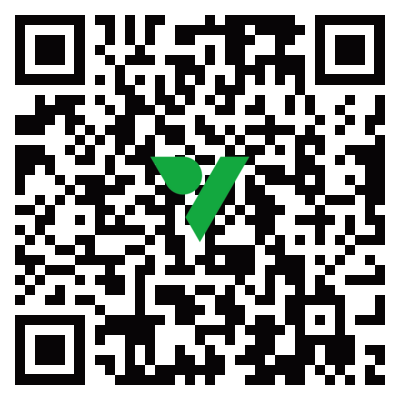One of the confusing things about PAR is that it is not a measurement. It’s just an acronym for the term Photosynthetic Active Radiation. PAR only takes the wavelengths of 400-700 nm (nanometers) into consideration, because this is what was thought to be the only range important to plant life and photosynthesis. We have since learned UV and far red, which sit outside the 400-700 nanometer wavelengths, can also be useful in photosynthesis and plant growth, but we will come back to this later. Just think of PAR as the range of useful light for plants.

What does this mean for plants? Plants respond to the blue and red light mostly, but it’s still best not to use one or the other independently. The plant will benefit more from a wider range of the wavelengths of everything in between blue and red. Growers can try to use different combinations of red than blue, and vice versa, depending on what attributes of plant growth are being targeted.
A slightly bluer spectrum is more beneficial for a vegetative cycle, while a redder spectrum benefits the flowering stage. Advanced grow lights like the Vivosun AeroLight paired with the Vivosun GrowHub Controller and Vivosun App, have a specific light spectrum for each stage of the growing phase to maximize plant growth and flowering during the plant’s life.
PFD
Ultraviolet (UV) and Infrared (IR) have also been found to help in plant growth and photosynthesis and are starting to be considered in the science world. The new term PFD stands for Photon Flux Density and includes the UV and IR wavelengths in its measurements. This term is still somewhat new, so it will be interesting to see how it is accepted by the LED community.

This Par Scale represents the wavelengths between 400-700 nm and also includes UV and Far Red. Notice the peaks of the Blue and Red as well as the area in between, giving it a full spectrum. You will also see a small bump around the 380 nm showing UV and readings past the 700 nm range to show the Far-Red spectrum.
PPF
When asked, “How much PAR does a light put out?” you would use the term PPF, which is the measurement of how much or the intensity of PAR is produced in a second of time. PPF stands for Photosynthetic Photon Flux. Think of light photons flowing out of the light and measure how much is flowing out per second. PPF does not include distance, just how much is flowing from the light source in any direction.

All the LED diodes together emit the PPF. It is basically what the light is able to produce and it is often confused with PPFD which is the measurement of PPF and a given distance.
Another thing that may be confusing is visual light. Human eyes cannot see the entire spectrum used in the PAR wavelengths; a light may appear dimmer than one may think due to the light spectrum that we cannot see. These are referred to in LUX or Lumens and are not important to what grow lights produce since it is only a visual measurement and not of Photosynthetic Active Radiation, which we know drives plant growth and photosynthesis.
PPFD
To measure how much PPF is reaching a certain distance, like a small area of the canopy, you would use a meter and place it in a certain place under the light. This would be the PPFD Photosynthetic Photon Flux Density. There are specialized meters to read PPFD, but the hobbyist can use a few different PAR Apps available for their phones. The PPFD would be different at various distances.
With an LED grow light, like a Quantum Board, hanging at 12” above a surface, you can measure the PPFD in a grid-like fashion and create a PPFD map or footprint. Directly under the center, the light would have the greatest PPFD reading. As you go further away from the center, the PPFD reading would decrease.

This is a common PPFD footprint or map. It’s helpful when setting up your grow lights to know what you can expect as far as the intensity of PAR reaching your canopy. Notice at a height of 12” the middle PPFD value is very high compared to the outer readings, but when raised to 18”, the numbers even out more. In this case, 18” would be a good starting point to hang your light in a setup without supplemental CO2. If using CO2, depending on the saturation, 16” may be a better starting point. Plants and environments can vary so getting the perfect height may take a little adjusting.
The design and construction of the grow lights determine the useful area and the distribution of the light. A Quantum Board that has many LEDs in a compact design can have a high intensity but only have a limited useful area before the PPFD drops below the optimal range. A Bar-Style LED grow light may have the same amount of LEDs and draw the same amount of power but distribute the light over a larger area with a more uniform PPFD footprint, but with less intensity.

To help with the drop off of PPFD to your canopy, reflective material can be used to bounce light back that would normally go to waste by being absorbed by the surrounding material. Creating reflective surfaces can be as easy as painting walls with flat white paint.
Products like Panda Film, a plastic-type material with a reflective white side can be used to line walls. Mylar is one of the most popular reflective materials also found in most grow tents. Vivosun grow tents use a Diamond Mylar so the light being reflected does not create hot spots and has almost 100% reflectivity.


So how do you apply what we just learned about PPFD? The normal range of PPFD during the 3 main stages in cannabis will increase as the plants go through seedling, vegetative, and flower phases. PPFD should be around 100-300 for seedlings, 400-600 for vegetive, and 800-1000 for flowering (without CO2 supplementation this is the normal range).
Having a flatter canopy helps the LED distribute light more efficiently to more of the plant—rather than just the highest cola. Indoor growers will use various techniques to achieve this like LST Low Stress Training to bend the main stem down. This will help to give a more uniform harvest.
If you have any questions, please don’t hesitate to reach out to us!
And be sure to check out our other blog posts for useful tips on becoming a great grower!
Subscribe to the Vivosun newsletter for growing tips, grower stories, and special offers, and get 12% off your first order!
We love the new Vivosun Smart Grow System and we are certain that you too will love it once you try it.
And join our Facebook farmer’s community for even more exclusive contests and prizes!
Download Vivosun App to get 15% off and explore more information!






